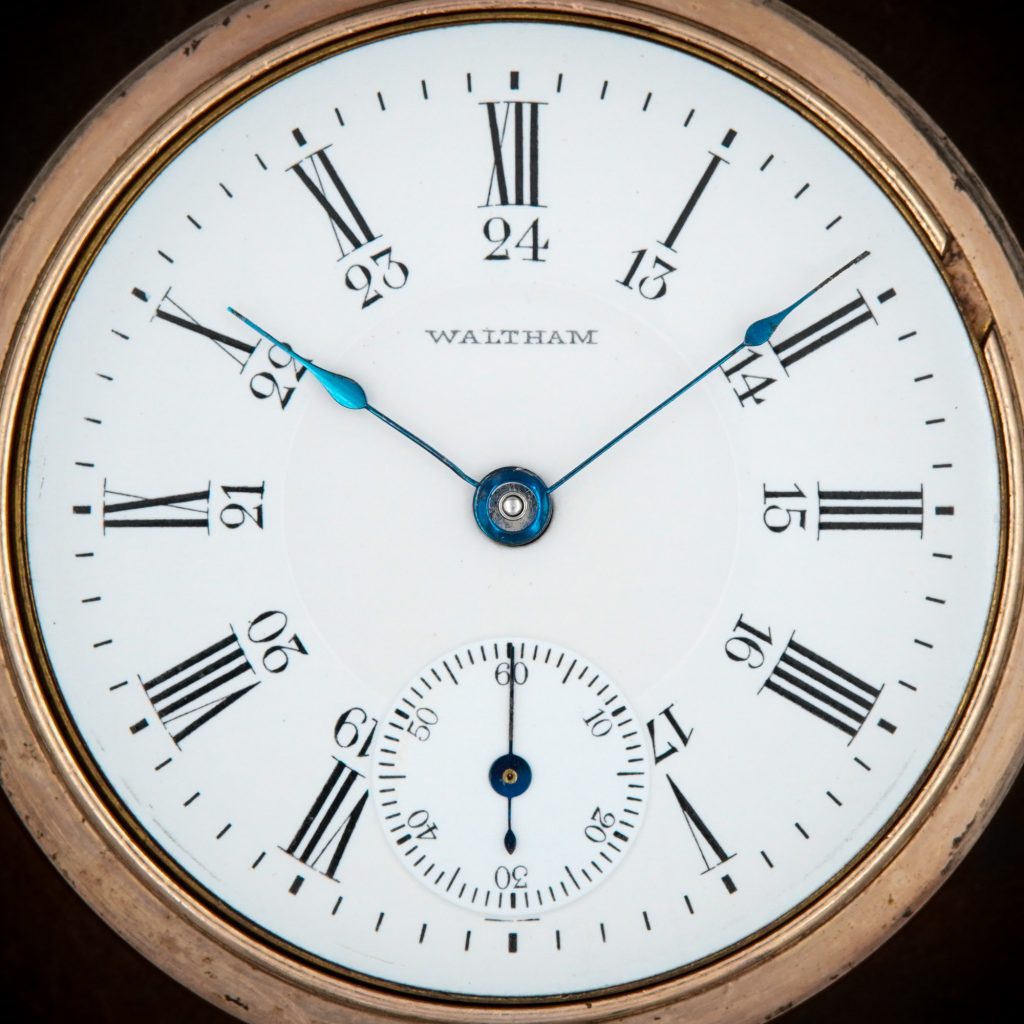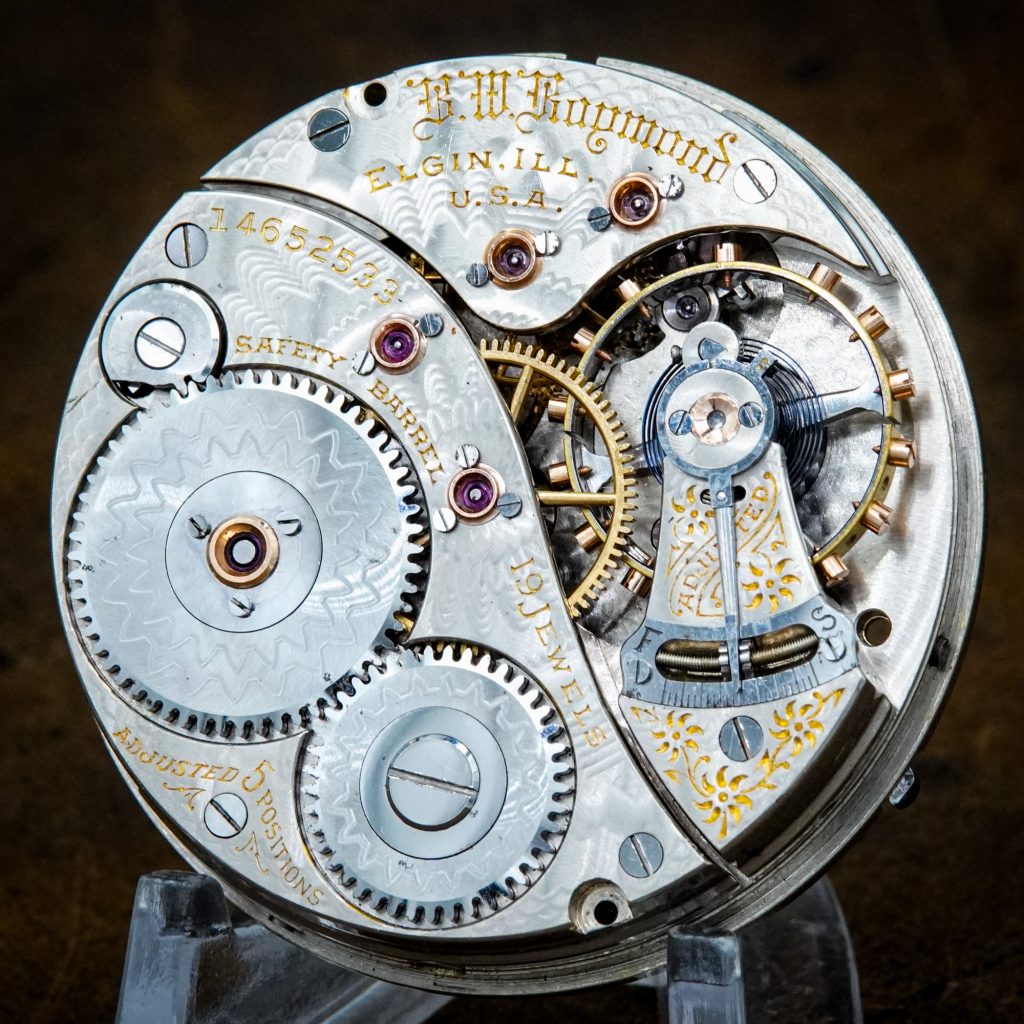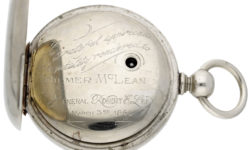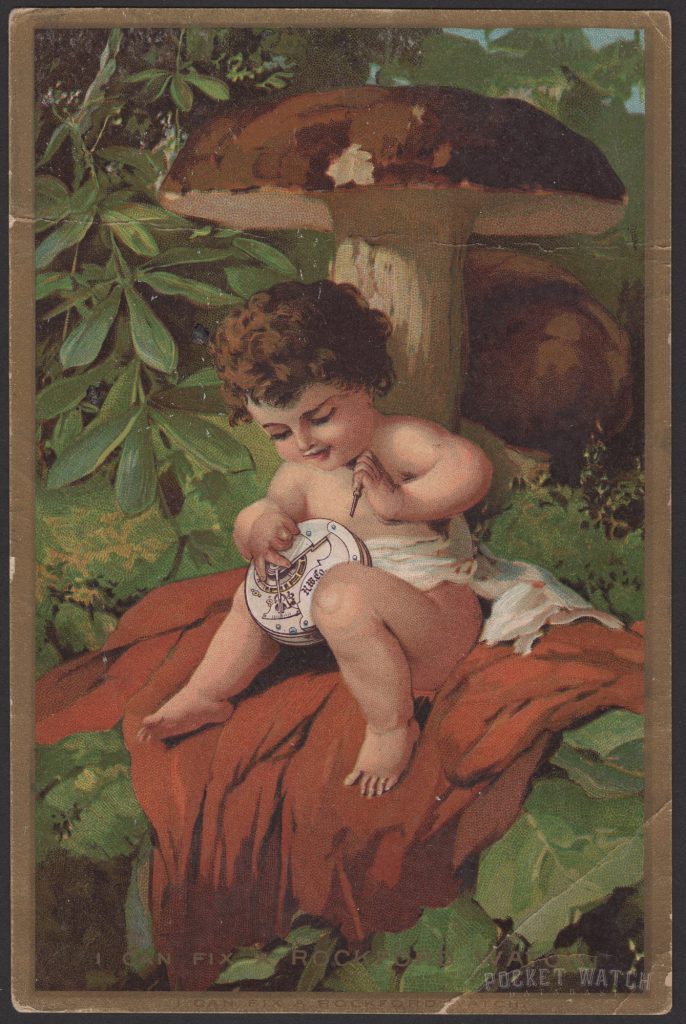The Introduction of the Twenty-Four Hour Division Dial (The “Canadian Dial”)

The adoption of standard time by the railroad industry in 1883 spurred a flurry of innovative ideas by individuals hoping to capitalize on the change. Many anticipated the natural progression of the change would soon prompt a general transition to the 24-hour method of time-telling.
The United States Patent Office was flooded with applications for new dial designs to present all 24 hours in a convenient fashion. However, the majority of these applications were rejected because this design pattern had been used as early as 1547, evident on a watch once carried by Prince Soltykoff that featured hours 1 to 24 arranged in two concentric circles.
Despite not being a patent-able concept, the 24-hour dial design was implemented as an option by most of the American watch companies at the time.
An article published in the November 1884 issue of the Jewelers’ Circular and Horological Review described the 24-hour dials being marketed in response to the standard time transition:
“Now that the question of standard time seems definitely settled, despite the defection of Louisville, the attention of railroad men and scientists, the two classes most concerned in the above reform, is turned toward the question of dial reform. Instead of our two divisions of twelve house apiece, which now make up the day and night of twenty-four hours, the advisability of numbering the hours consecutively from one to twenty-four is being discussed. Already in many jewelers’ windows may be seen watch faces provided with a double ring of figures, the inner one of which shows the figures 13 to 24.”November 1884 issue of the Jewelers’ Circular and Horological Review
Dials featuring the numerals 13 to 24 arranged in a ring around the center are frequently referred to by collectors as “Canadian Dials” due to the sustained popularity in Canada. However, the dials were widely available and not exclusive to any single region.
A full-page advertisement by Robbins & Appleton in an 1884 issue of the Jewelers’ Circular and Horological Review refers to the new design as the “Twenty-Four Hour Division” dial.
“Recognizing the importance of having watches that will conform to the new system of indicating time adopted by many railroads of counting the hours from one to twenty-four consecutively, instead of from one to twelve, we are now prepared to furnish dials as indicated by the accompanying cut, marking either twelve or twenty-four hours, without occasioning confusion in either system.”Robbins & Appleton Advertisement, 1884 issue of the Jewelers’ Circular and Horological Review





1 Comments